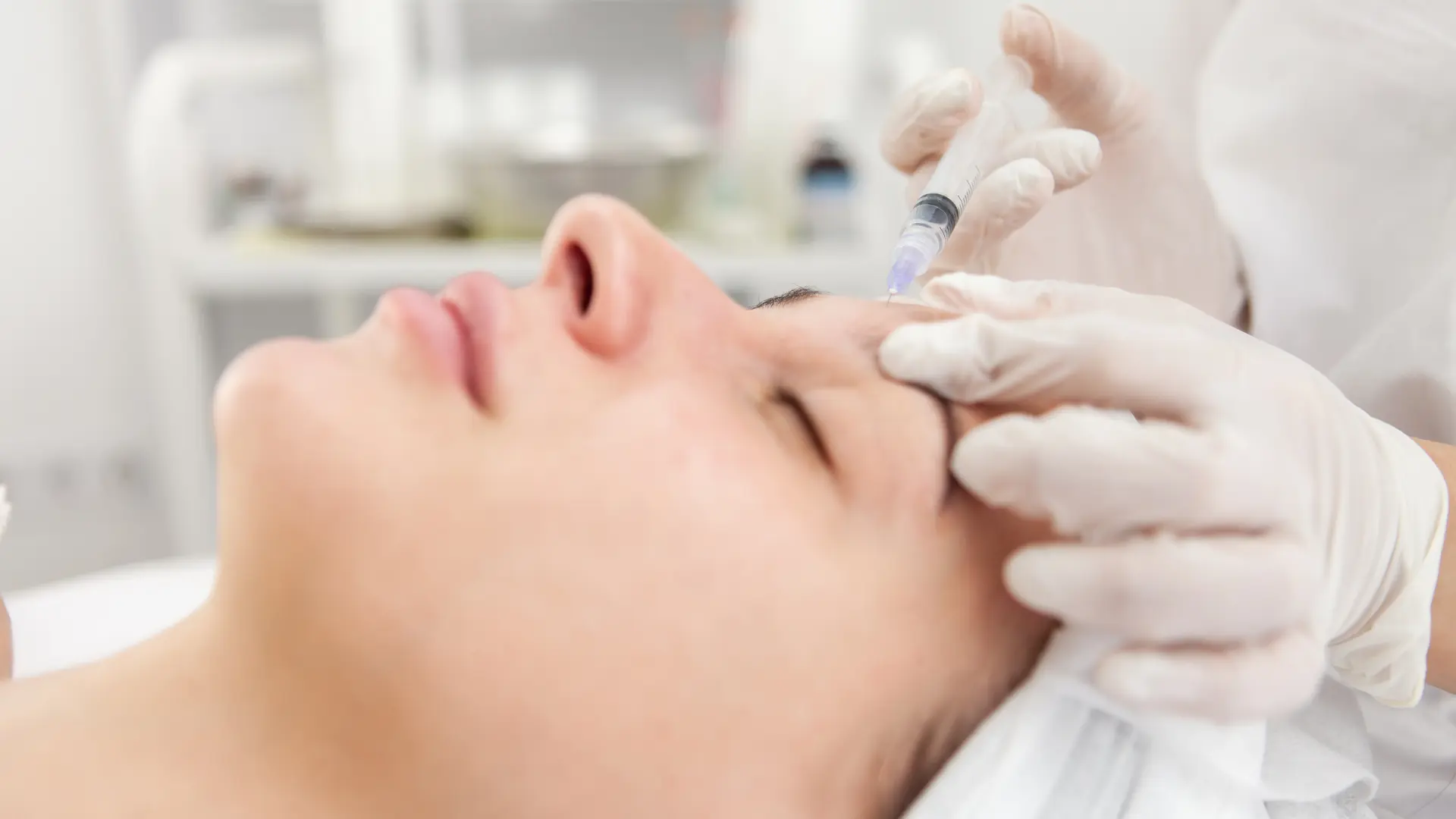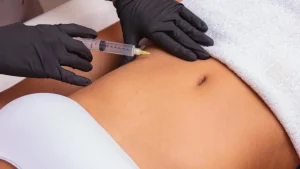The latest report from the American Society of Plastic Surgeons underscores a significant increase in the interest in neuromodulator injections. Their popularity has doubled since 2019, establishing them as the preferred minimally invasive cosmetic procedure. These treatments provide a non-surgical option for individuals seeking facial rejuvenation.
Neuromodulator injections are renowned for their efficacy in both medical and aesthetic applications. They reduce muscle activity and contractions, softening fine lines and facial wrinkles. Brands such as Nabota and Botox provide safe and effective treatments, encouraging providers and patients to opt for these neuromodulators to maintain their beauty and youthful appearance.
This article will compare Nabota vs Botox, their compositions, mechanisms of action, approved uses, and clinical studies.
Key Takeaways
- Nabota originated from South Korea’s Daewoong Pharmaceutical, while Allergan Aesthetics developed Botox.
- Nabota and Botox block the release of acetylcholine, halting muscle contractions and resulting in muscle relaxation, which reduces the appearance of visible wrinkles and lines.
- Nabota typically shows noticeable effects within two to three days after injection, while Botox usually takes four to seven days for the onset of action.
- Nabota and Botox have their fair share of clinical studies that focus on determining their potency, safety, and efficacy for aesthetic treatments.
- Botox has longer established its safety and efficacy profile in the United States than Nabota, and it has more approved uses in both aesthetic and therapeutic areas.
About: Medica Depot is your trusted all-in-one supplier, offering a range of high-quality medical injectables and supplies. If you’re looking to buy Nabota online, our dedicated sales agents can give you proper guidance. We offer a worry-free experience in searching for the best and most popular products on the market. Whether for health professionals, plastic surgeons, dermatologists, licensed estheticians, or other specialists, we can offer genuine, brand-name products you may need. With Medica Depot, we prioritize serving you better to improve the patient’s quality of life.
Understanding Nabota and Botox
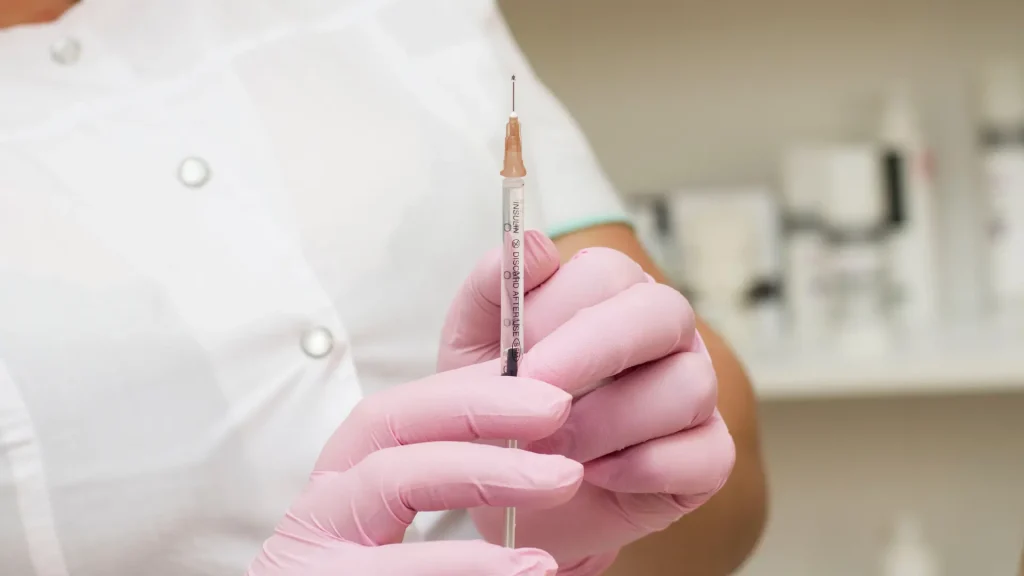
Nabota (PrabotulinumtoxinA), Botox (onabotulinumtoxinA), and other neuromodulator injectables continuously emerge as non-surgical, safe, and effective solutions for individuals seeking an answer to their facial skin concerns. While they differ in brand names, Nabota and Botox utilize botulinum toxin type A in their formulation for aesthetic and therapeutic applications.
Nabota originated from South Korea’s Daewoong Pharmaceutical, while Allergan Aesthetics developed Botox. These injections target wrinkle reduction and treat various muscle conditions. When comparing Nabota vs. Botox, it’s worth noting that they have similar active ingredients in botulinum toxin type A but differ in their formulation and production process.
Additionally, they work similarly when injected. Nabota and Botox block the release of acetylcholine, halting muscle contractions. This action results in muscle relaxation and reduces the appearance of visible wrinkles and lines.
They also differ in their US Food and Drug Administration approval. Botox has received more approved uses from the US FDA than Nabota. However, Nabota has earned more approval in South Korea for treating muscle conditions. Here are the neuromodulators’ approved uses.
- Nabota: Glabellar lines associated with corrugator or procerus muscle activity in adult patients (Approved in South Korea, US, Europe, and Canada). Other conditions approved in South Korea include upper limb spasticity, lateral canthal lines, and blepharospasm.
- Botox: Forehead lines, crow’s feet lines, and frown lines. Medical conditions include chronic migraine, adult and pediatric spasticity, cervical dystonia, overactive bladder, blepharospasm, strabismus, and severe primary axillary hyperhidrosis.
Onset of Action and Duration of Results
Nabota typically shows noticeable effects within two to three days after injection. Improved peak results may show in a week, with maximum effects after a few weeks to a month. Meanwhile, Botox usually takes four to seven days for the onset of action, with its peak improvements around 10 to 14 days and maximum outcomes at a month.
When comparing Nabota vs Botox, it’s essential to understand the duration of wrinkle reduction or its effects. Both neuromodulators can last approximately three to six months post-injection. They may opt for maintenance sessions for sustained results, but it’s worth noting that several individual and treatment factors affect the longevity of Nabota and Botox’s effects.
Patient Satisfaction and Safety
When seeking new treatments, individuals must look into clinical evidence to earn their trust and understand their safety and effectiveness in delivering optimal outcomes. Nabota and Botox have their fair share of clinical studies that focus on determining their potency, safety, and efficacy for aesthetic treatments.
In a phase 4 clinical study by Song et al. (2018), most subjects experienced the onset of action within two days following Nabota administration. Furthermore, they have proven Nabota safe and effective in treating glabellar frown lines.
In contrast, Joseph et al. (2022) demonstrated that using more than 20 units of onabotulinumtoxinA (Botox) for glabellar lines treatment resulted in a longer-lasting effect and higher patient satisfaction compared to the standard 20-unit dose without affecting safety.
While these clinical studies highlight the efficacy and safety of these injectables, several Botox and Nabota before and after photos demonstrate the neuromodulators’ effects. Individuals may find their preferred treatment while examining others’ experiences.
The first patient received Nabota for their forehead lines, which gave smoother skin to the individual. Meanwhile, the second patient addressed their forehead lines and nasolabial folds with the help of Botox. These patients achieved their youthful facial appearance with the medical professionals’ expertise.
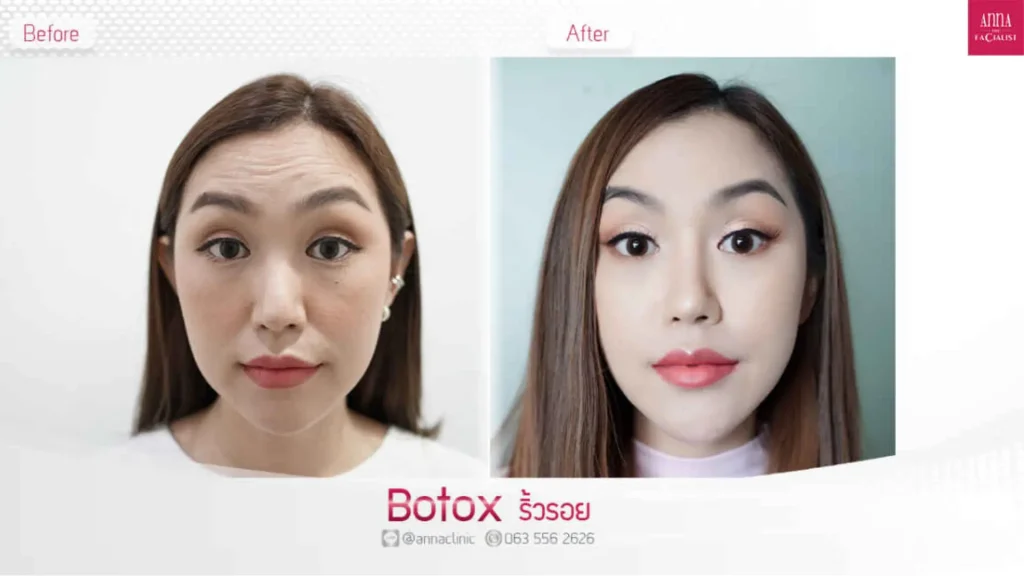
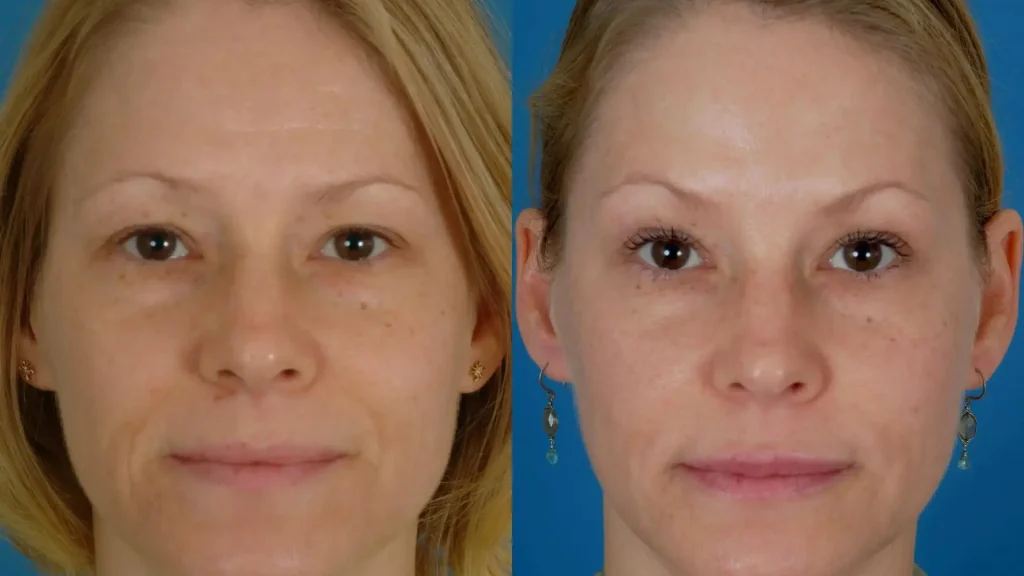
The effective improvements in these patients offer a visual representation of the high satisfaction with both Nabota and Botox treatments. These injections have shown that they are well-tolerated by most individuals, specifically in their facial aesthetic concerns.
Is Nabota a Viable Alternative to Botox?
When comparing Nabota vs Botox, individuals should understand that both utilize botulinum toxin type A. However, Nabota slightly purifies this ingredient to minimize the additional proteins. Nonetheless, Nabota and Botox work similarly and may last three to six months post-injection.
Botox has longer established its safety and efficacy profile in the United States than Nabota, and it has more approved uses in both aesthetic and therapeutic areas. Given these critical differences, individuals must seek the expertise and guidance of medical professionals to ensure they can achieve their desired outcomes.
These providers can offer various considerations for choosing between Nabota vs Botox. By understanding these factors, individuals and medical providers can determine the most suitable neuromodulator injection and create a tailored treatment plan for maximum and optimal results.
- Skin Condition or Concern
- Onset of Action and Longevity of Effects
- Individual Treatment Response
- Cost and Treatment Protocol
Consulting with a licensed and trained aesthetic provider can significantly help in seeking the most suitable and effective option based on each individual’s needs, concerns, and preferences.
Conclusion
The emergence of Nabota and Botox highlights the increasing popularity of neuromodulator injections for non-surgical facial rejuvenation. Both products utilize botulinum toxin type A and share similar mechanisms of action in reducing muscle activity and contractions to soften fine lines and wrinkles. The choice between Nabota vs Botox depends on individual preferences, approved uses, and other considerations.
While Botox has longer-established safety and efficacy profiles and more approved uses in the United States, Nabota has gained approval in South Korea for various muscle conditions. Understanding the differences and similarities between Nabota and Botox is essential for individuals seeking non-surgical solutions for their facial skin concerns.
FAQs
1. What are the main differences between Nabota and Botox?
While both utilize botulinum toxin type A as their active ingredient, Nabota and Botox differ in their formulation, onset of action, approved uses, and manufacturers.
2. How do Nabota and Botox work in reducing wrinkles and lines?
Both Nabota and Botox block the release of acetylcholine, halting muscle contractions, which results in muscle relaxation and reduces the appearance of visible wrinkles and lines.
3. Are there clinical studies supporting the safety and efficacy of Nabota and Botox?
Yes, both Nabota and Botox have undergone clinical studies to determine their potency, safety, and efficacy for aesthetic treatments, and the results have been positive.
References
- Plastic Surgery Statistics. (n.d.). American Society of Plastic Surgeons. Retrieved August 26, 2024, from https://www.plasticsurgery.org/plastic-surgery-statistics?_gl=1
- Song, S., Lee, Y. H., Hong, J. P., & Oh, T. S. (2018). Safety, efficacy, and onset of a novel botulinum toxin type A (Nabota) for the treatment of glabellar frown lines: a single-arm, prospective, phase 4 clinical study. Archives of craniofacial surgery, 19(3), 168–174. https://doi.org/10.7181/acfs.2018.01886
